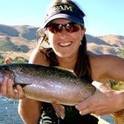Herbivores play a crucial role in shaping tundra ecosystems through their effects on vegetation, nutrient cycling, and soil abiotic factors. Understanding their habitat use, co-occurrence, and overlap is therefore essential for informing ecosystem-based management and conservation. In the High Arctic, only a marginal proportion of the land area is vegetated, and climate change is impacting herbivore population sizes and their habitats. In this study, we assessed the spatial habitat overlap of a vertebrate herbivore community based on: 1) regional predictive summer habitat suitability models for the resident Svalbard reindeer (Rangifer tarandus platyrhynchus), resident Svalbard rock ptarmigan (Lagopus muta hyperborea), and the migratory pink-footed goose (Anser brachyrhynchus), and 2) presence of fecal pellets, reflecting the annual habitat use of reindeer, ptarmigan, and geese, including the pink-footed goose and barnacle goose (Branta leucopsis). Our findings revealed that only small proportions of the available land cover (∼ 12,516 km2; all land area excluding glaciers and freshwater) are suitable for each of the species (habitat suitability [HS] > 0.5): reindeer (22 %), ptarmigan (11 %), and pink-footed goose (4 %). Overlapping suitable habitat [HS > 0.5] for reindeer and goose accounted for only 3 % of the total vegetated area (∼ 8848 km2) and was primarily found in heath and moist habitats dominated by mosses, graminoids, and herbaceous plants. The overlapping suitable habitat for reindeer and ptarmigan covered 8 % of the vegetated area, in higher elevation ridges with vegetation on drier substrates. The shared habitat for ptarmigan and goose, and all three species of herbivores, was less than 1 % of the vegetated area. Additionally, an assessment of fecal pellets suggested that the highest overlap in habitat use among reindeer and goose occurred in bird cliff moss tundra, followed by moss tundra and heath habitats. The small proportion of the vegetated area suitable for all three herbivores indicates a high degree of habitat differentiation. Therefore, different habitats need to be considered for the management and conservation of resident and migratory herbivore species in this High Arctic Archipelago. Moreover, our results underscore the importance of the small but productive parts of the landscape that were used by all herbivores.
Article
Low Spatial Habitat Overlap of Herbivores in the High Arctic Tundra
Global Ecology and Conservation
Document Type
Article
Publication Date
1-1-2024
Disciplines
Abstract
Creative Commons License
Creative Commons Attribution 4.0 International
Citation Information
Ravolainen, Virve; Paulsen, Ingrid M. G.; Eischeid, Isabell; Forbey, Jennifer Sorensen; Fuglei, Eva; Hájek, Tomáš; Hansen, Brage B.; Loe, Leif Egil; Macek, Petr; Madsen, Jesper; Soininen, Eeva M.; Speed, James D. M.; Stien, Audun; Tømmervik, Hans; and Pedersen, Åshild Ønvik. (2024). "Low Spatial Habitat Overlap of Herbivores in the High Arctic Tundra". Global Ecology and Conservation, 49, e02797. https://doi.org/10.1016/j.gecco.2024.e02797

Virve Ravolainen and Ingrid M.G. Paulsen contributed equally to this work.